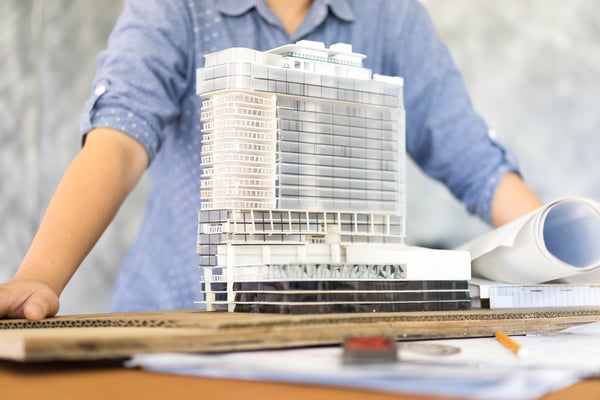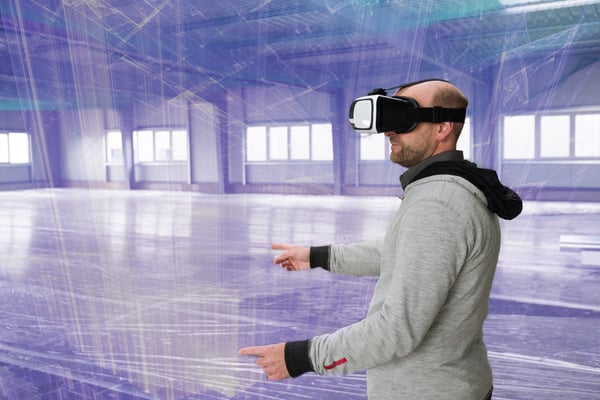Why a Digital Twin Is the Best Way to Start a Building Project, Part 2

A digital twin is an identical representation of a real-world object, hosted in a virtual environment. The concept of a digital twin goes beyond a geometric representation, since it contains highly detailed information of all components in the model. The data contained in a digital twin can also be used to run simulations, based on physics principles and equations.
Digital twins have promising applications in the construction industry. Recreating a building digitally before actual construction leads to better design decisions. Once the project is completed, the digital twin is useful for building modifications, operation, and maintenance.
Manage your construction project with the latest technology, and save time and capital.
Our previous blog post discussed how a digital twin can be used in building design, construction planning, and even real estate marketing. Now we will discuss how a digital twin can be used for project management once the construction stage has started.
Optimizing the Construction Schedule with a Digital Twin
A digital twin of a building can be used to simulate the construction process before starting. This may reveal bottlenecks in process, or interference between activities that are scheduled simultaneously. If all these issues are corrected first, construction activities can proceed smoothly and with minimal disruption.
Simulating construction with a digital twin also provides a better idea of how the project will use its budget throughout the construction stage. This is useful for planning purchases related to the project, and when negotiating loan terms with a financial institution.
A construction simulation also is useful for managing subcontractors, since project managers get a better idea of when and where they will be working. Lack of coordination between trades is a frequent cause of delays and mistakes in construction projects. However, a digital twin can help improve coordination.
Tracking Construction Progress with a Digital Twin

One of the main challenges for construction managers is knowing the current state of a project. Since construction involves many technical disciplines, knowing the exact state of a project in real-time is difficult. Projects are inspected at regular intervals by owners, architects, and engineers, but conditions are constantly changing. By the time a progress report is completed, it no longer reflects the actual state of the project.
- When a digital twin is used during construction, it can be constantly updated with site information.
- There is no need to have several visits by the different parties involved since they can simply check the digital model.
- Instead of scheduling many visits and meetings, someone who is constantly on site can be tasked with keeping the digital twin updated.
- This can be accomplished with mobile devices, and using drones can make data collection easier.
Reducing the number of site visits is especially useful during a health emergency like the coronavirus outbreak. By tracking progress with a digital model, project owners, and other staff members can follow social distancing measures more effectively.
Progress reports and other construction documents can also be created more easily with a digital twin. Key information about the project can be easily retrieved, instead of having to schedule a site visit. An agile documentation process improves the flow of information, and it can also be used to manage interim payments more effectively.
Managing Change Orders with a Digital Twin

Change orders lead to unplanned expenses in construction projects. Depending on the contract terms, the cost may be assumed by the owner, the contractor, or both. Change orders can be minimized with smart design decisions and project planning, but they will still be necessary in some cases.
A digital twin is also useful for managing change orders. By simulating changes on the building model first, architects and engineers can test several options in a very short time. This can be used to optimize the cost and man-hours associated with a change order, reducing its impact on the project schedule and budget.
Architects and engineers can also use a digital twin to manage change orders proactively. Even if construction has already started, the building model can be used to identify conflicts that were not detected during the design stage. This way, the change order can be processed before the corresponding activities start, avoiding waste of materials and labor.

Michael Tobias
Michael Tobias, the Founding Principal of NY Engineers, currently leads a team of 150+ MEP/FP engineers and has led over 4,000 projects in the US
Join 15,000+ Fellow Architects and Contractors
Get expert engineering tips straight to your inbox. Subscribe to the NY Engineers Blog below.

